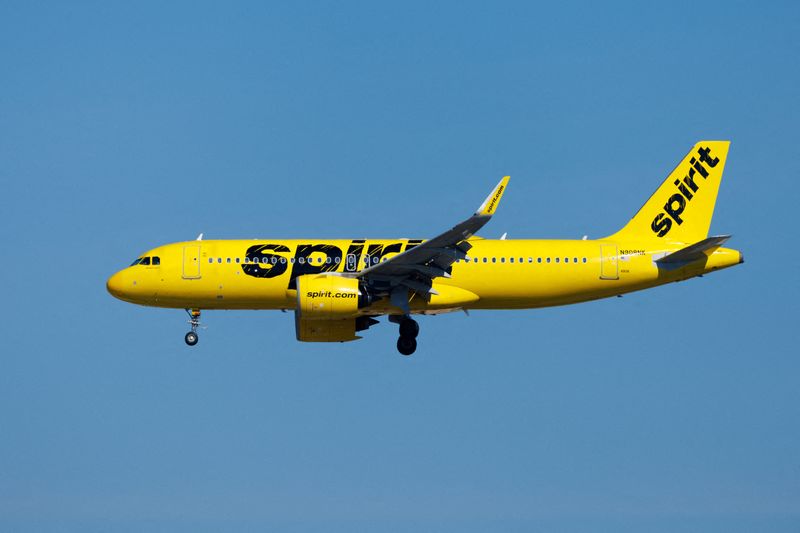(Reuters) -Spirit Airlines has filed for bankruptcy protection, it said on Monday, after the pioneer of no-frills travel in the U.S. struggled with a long run of quarterly losses, failed merger attempts and looming debt maturities.
The airline, recognized for its bright yellow livery, had been losing money despite strong travel demand, as it struggled with higher operating costs.
Spirit’s troubles deepened after the collapse of its $3.8 billion planned merger with JetBlue Airways (NASDAQ:JBLU) in January and the impact of RTX’s Pratt & Whitney Geared Turbofan (GTF) engines snag that grounded many of its aircraft.
The airline listed its estimated assets and liabilities in the range of $1 billion to $10 billion each, according to a court filing on Monday.
Spirit has entered into an agreement with its bondholders that is expected to reduce total debt and provide increased financial flexibility.
The airline, as part of the prearranged Chapter 11 bankruptcy protection, has received commitment for a $350 million equity investment from existing bondholders.
Existing bondholders will also provide $300 million in debtor-in-possession (DIP) financing, which, together with available cash, is expected to support the airline through the Chapter 11 process.
The carrier said it expects to continue its flight operations through the proceedings and customers can book and fly without interruption.
Spirit expects to be delisted from the New York Stock Exchange in the near term.
The company said it expects to emerge from the Chapter 11 process in the first quarter of 2025.
Spirit’s shares, halted for trading on Monday, have plunged more than 90% this year.
SURGING COSTS
The airline’s deal with JetBlue was scrapped after a Boston judge blocked the merger on grounds it would harm consumers by reducing competition.
U.S. airlines have seen their costs inflate after the pandemic following a series of new labor contracts fueled by a shortage of experienced workers and increased aircraft maintenance expenses.
Discount carriers bore the brunt as their traditional business model made it more difficult for them to pass on the higher costs to passengers.
As losses mounted, Spirit sought alternatives including reviving a merger with rival Frontier Airlines but talks broke down, the Wall Street Journal reported last week.
Frontier had sought to buy Spirit in 2022 before JetBlue gate-crashed the planned marriage with a higher offer.
Last week, Fitch downgraded Spirit’s credit rating further into junk territory, citing probabilities of a near term default.
The carrier faces the near-term maturity of its 2025 loyalty bonds and 2026 convertible notes
HUMBLE BEGINNINGS
The company started out as a long-haul trucking company in 1964 before shifting to aviation around 1983. It offered leisure packages to popular destinations under the name Charter One Airlines and rebranded to Spirit in 1992.
The discount carrier became popular with budget-conscious customers willing to forgo amenities like checked bags and seat assignments.
Ultra-low-cost carriers, which excelled at keeping their expenses low and offering affordable, no-frills travel, have struggled since the pandemic as travelers prefer to pay extra for a more comfortable journey as they pursue experiences.
Spirit’s troubles, along with those at some of its rival budget carriers, have spurred talks of a flawed business model among some Wall Street analysts.

